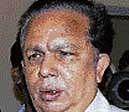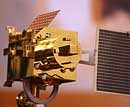

The abrupt end to Chandrayaan-1 would not affect the second lunar mission, he said. On the contrary, very valuable lessons were learnt that will be incorporated to Chandrayaan-2 which is scheduled for 2013. An assessment committee would analyse the available data to identify the core problems, he added. The launch of Chandrayaan-1 last October put India in an elite club of countries with moon missions: the United States, Russia, Japan, China and members of the European Space Agency. The mission was part of India’s effort to assert its power in space and claim some of the business opportunities there. One focus was to prospect the lunar surface for natural resources, including uranium for nuclear fuel.
“The primary lesson learnt is that we have to have a detailed understanding and knowledge of the environment we are working with. There was a higher level of radiation around the moon than assessed that caused the failure. In future, we will have to use devices that are more resistant to radiation,” Nair said. In Bangalore, ISRO spokesperson S Satish said initial analysis of the telemetry data pointed towards a failure of the power systems linked to the computer that issues commands for the control of the spacecraft. “We now know from the results of the two-day analysis, that it is not possible to revive the mission,” Satish said.
But the ISRO chief said the mission was a complete success, achieving 95 per cent of its objectives. It survived for 315 days which is a very good track record, considering many other similar missions have burnt off within the first month.